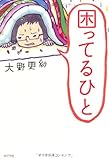On WAN’s main website, Naho Araki is writing a series of
articles on books and works that concern Yae Niijima (1845-1932), who is often
called Japan’s “Joan of Arc.” This article will briefly introduce Yae’s life and
present excerpts from Naho Araki’s articles on narratives about Yae’s life in the
recent media.
***
The name of Yae Niijima can be heard frequently in Japan these
days because the NHK (Japan Broadcasting Corporation) history drama series, a
production that is famed in the country, will feature her in its new series “Yae no Sakura” starting early 2013.
Until the announcement of this new drama series, her husband
Joe Niijima (a.k.a. Joseph Hardy Neesima[1]; 1843-1890)
was the better known Niijima, hands down. Joe is founder of the Doshisha
schools in Kyoto
and among the most well-known educators of the Meiji era (1868-1912). His name
appears even in high school Japanese history textbooks.
Yae grew up as a daughter of a samurai of the Aizu clan in what
is Fukushima
prefecture today. In one of her most famous episodes, Yae disguised herself as
a man and took up gun and sword to fight in the Boshin War (1868-1869) to
protect her clan.
Yae was divorced when she met Joe. Joe is said to have been attracted
to Yae because she was not the traditional obedient wife. Their wedding in 1876
was Japan’s
first Christian-style wedding between Japanese citizens. (Joe had been baptized
in the United States
and Yae also converted to Christianity after meeting Joe.) Joe called Yae a
"handsome woman", in reference to her life in pursuit of equality
between men and women in an era when ideas based on traditional feudalism still
lingered. As husband and wife, they had a close-knit marriage until Joe’s death
in 1890.
After Joe’s death, Yae worked as a volunteer nurse for the
Red Cross in the Sino-Japanese and Russo-Japanese wars. For this reason, she is
sometimes called the Nightingale of Japan, as well.
On the main WAN website, Naho Araki discusses the attention
Yae is gaining these days in Japan
in the context of feminism. She argues:
When you look at Yae’s
eventful and unique life, I think there are elements that are acceptable, not
acceptable, and open for interpretation in the context of feminism.
Araki is concerned that the new drama series might glamorize
the fact that she didn’t shun traditional roles imposed on women:
The “handsome woman”, fighting alongside men
and navigating life wisely, was also aware of “the roles of the woman” and her
position of a daughter in a samurai family. (…) I am concerned that (the drama
series) might highlight the fact that her pursuit to improve women’s status was
in addition to duly fulfilling the traditional female responsibilities.
Araki also points out that Yae was a proud member of the
Aizu clan. She believed in class society and accepted war:
If they focus on these
characteristics as “good conservative traits,” it would not be very desirable from the point
of view of feminism.
We can see contradicting ideological aspects in Yae’s life: she believed in
traditional feudalism, equality between men and women, Christianity, and volunteerism
for the Red Cross. Araki states:(For the new drama series and books about her) there is probably no getting around her criticism of Japanese society in her quest to improve women’s status, as she went about her married life with Joe and her work as a nurse for the Red Cross. I think it will be interesting to see the degree of sincerity with which the new drama series and public opinion will judge these aspects of her life.
Adapted by Naoko Hirose








